By Robert L. Reid
The Port of Los Angeles has big plans underway for the historic Wilmington neighborhood that is located near its harbor. This includes public parks, new promenades, a pier with views of a unique waterfront feature, a realigned street, and a pedestrian bridge that will provide public access to many of these amenities across active railroad lines and the realigned street.
The $71 million project, called the Wilmington Waterfront Promenade, broke ground late last year and is expected to be completed by 2023. It will convert a roughly 12-acre former industrial site along the port’s Slip No. 5 into a public park, a roughly 1,300 ft long waterfront promenade, and other recreational spaces.
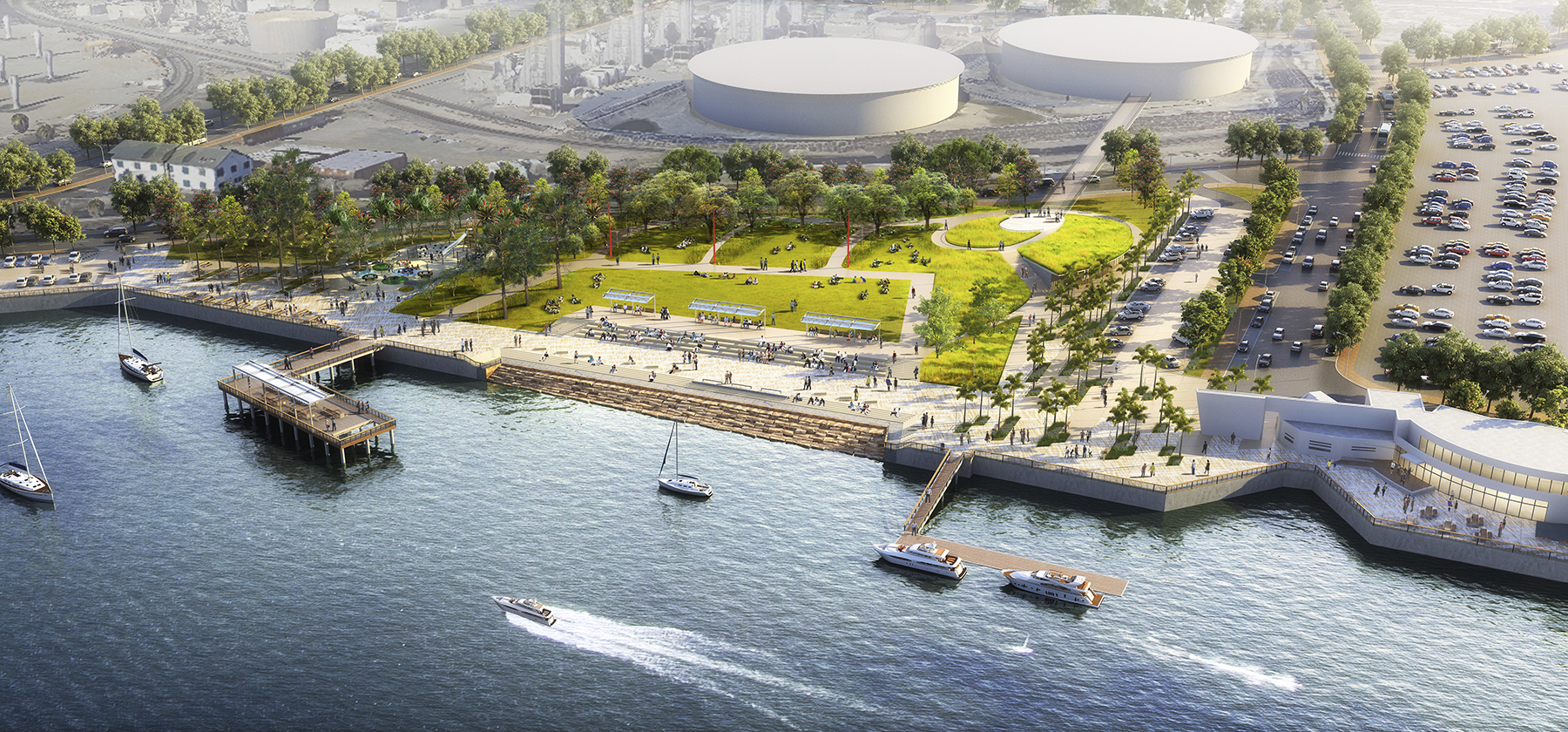
A second project — still in its design phase — will construct a 380 ft long pedestrian bridge from a second park and promenade site, north of the Wilmington Waterfront Promenade portion. Part of what is known as the Avalon Promenade and Gateway Project, the bridge will provide access for visitors to the northern park to move southward — crossing the tracks for a local short-line railroad, the Pacific Harbor Line — into the Wilmington Waterfront Promenade park. Work on the pedestrian bridge is expected to begin in late 2022.
Project teams
Sasaki Associates Inc. — headquartered in Watertown, Massachusetts — is the lead designer of the Wilmington Waterfront Promenade project. The firm previously created a master plan for the Port of Los Angeles to redevelop the overall Wilmington waterfront area. The master plan included the Wilmington Waterfront Park, a green space that opened in 2011 on a 30-acre brownfield site located north of the Avalon Promenade and Wilmington Waterfront Promenade projects.
Moffatt & Nichol Engineers, based in Long Beach, California, is the project engineer for the Wilmington Waterfront Promenade project. Earth Mechanics Inc., based in Fountain Valley, California, is the geotechnical engineer. PacRim Engineering, based in Santa Ana, California, is the site structural engineer. Sully-Miller Contracting Co., based in Brea, California, is the general contractor.
San Francisco-based T.Y. Lin International is designing the Avalon Promenade and Gateway Project, including the pedestrian bridge.
Project plans
The industrial setting of the Wilmington waterfront area — which previously included some small manufacturing operations, warehouses, and surface parking lots — had long limited public access to the waterfront. Prior to the current project, however, the Port of Los Angeles and various tenants that had once operated facilities at the site had cleaned up the properties, which helped prepare the area for its new usage, notes Hugo Cisneros, P.E., M.ASCE, a Port of Los Angeles civil engineer and the port’s project manager on the waterfront promenade project.
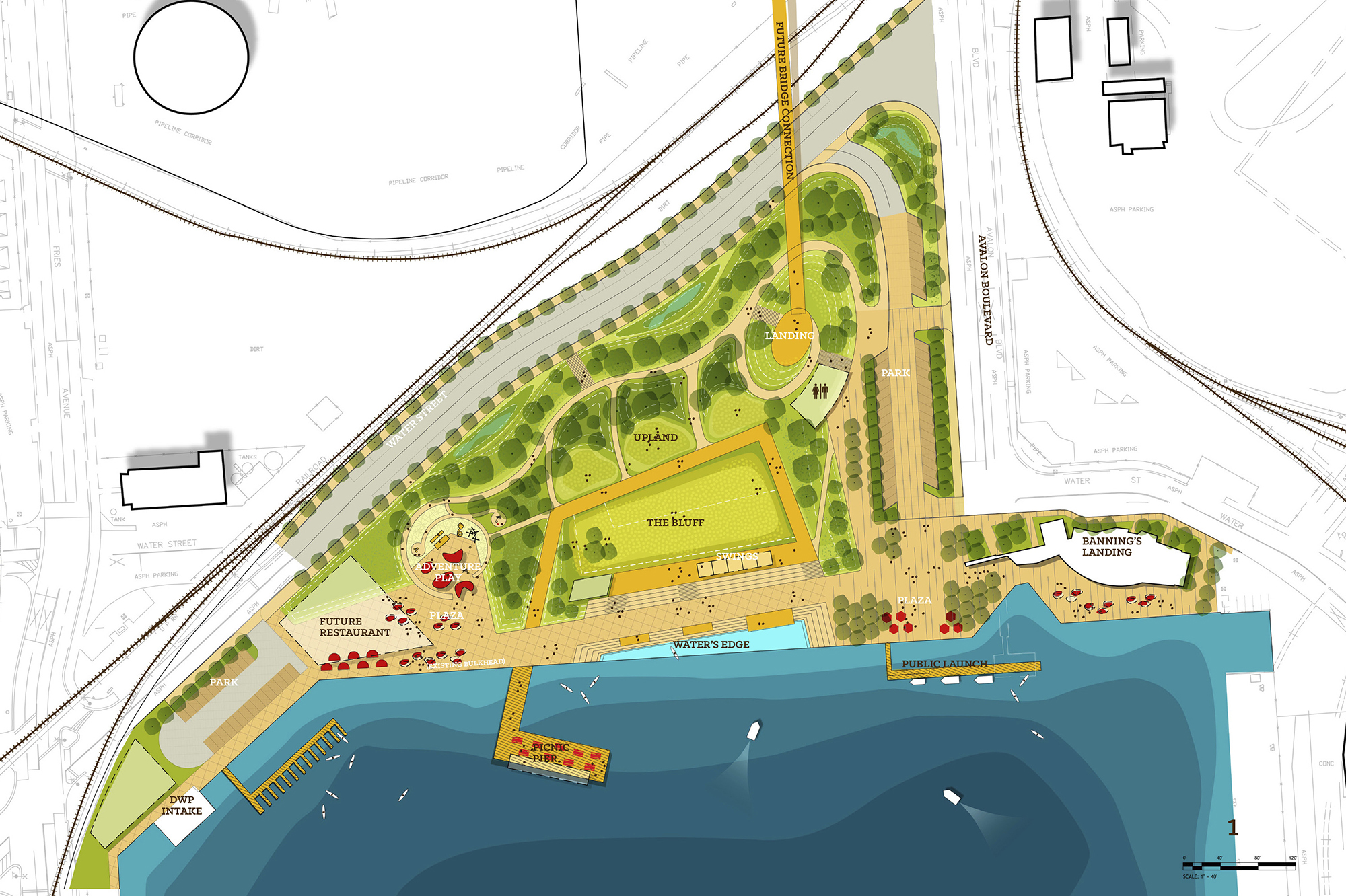
In addition, an “innovative land swap agreement” between the Port of Los Angeles and the Los Angeles Department of Water and Power in October 2020 led to the demolition of a 500,000-barrel petroleum storage tank and other buildings that had been located nearby, opening those spaces for the new development, according to an April 2021 press release from the port. A portion of Water Street — which previously ran east-west through the site — is being realigned to extend across the northeast boundary of the site, adjacent to the railroad tracks, says Cisneros. This will help create a large continuous space along the waterfront for the promenade and park, he explains.
The Wilmington waterfront site was already home to the Banning’s Landing Community Center, a 10,000 sq ft events space that “had been kind of tucked away in the middle of this industrial area,” Cisneros says. Although the community center itself will not be altered, a new surrounding plaza will hopefully help make the facility a highlight of the new public spaces, he adds. A new stainless steel guardrail system with integrated lighting stanchions will also be installed at the center and along most of the waterfront edge as part of the project.
Building up and down
The Wilmington Waterfront Promenade project will build up a portion of the site — creating an earthen mound that will serve as the landing site for the pedestrian bridge — and build down from the edge of the waterfront to the water itself, explains Zachary Chrisco, P.E., M.ASCE, a Sasaki principal.
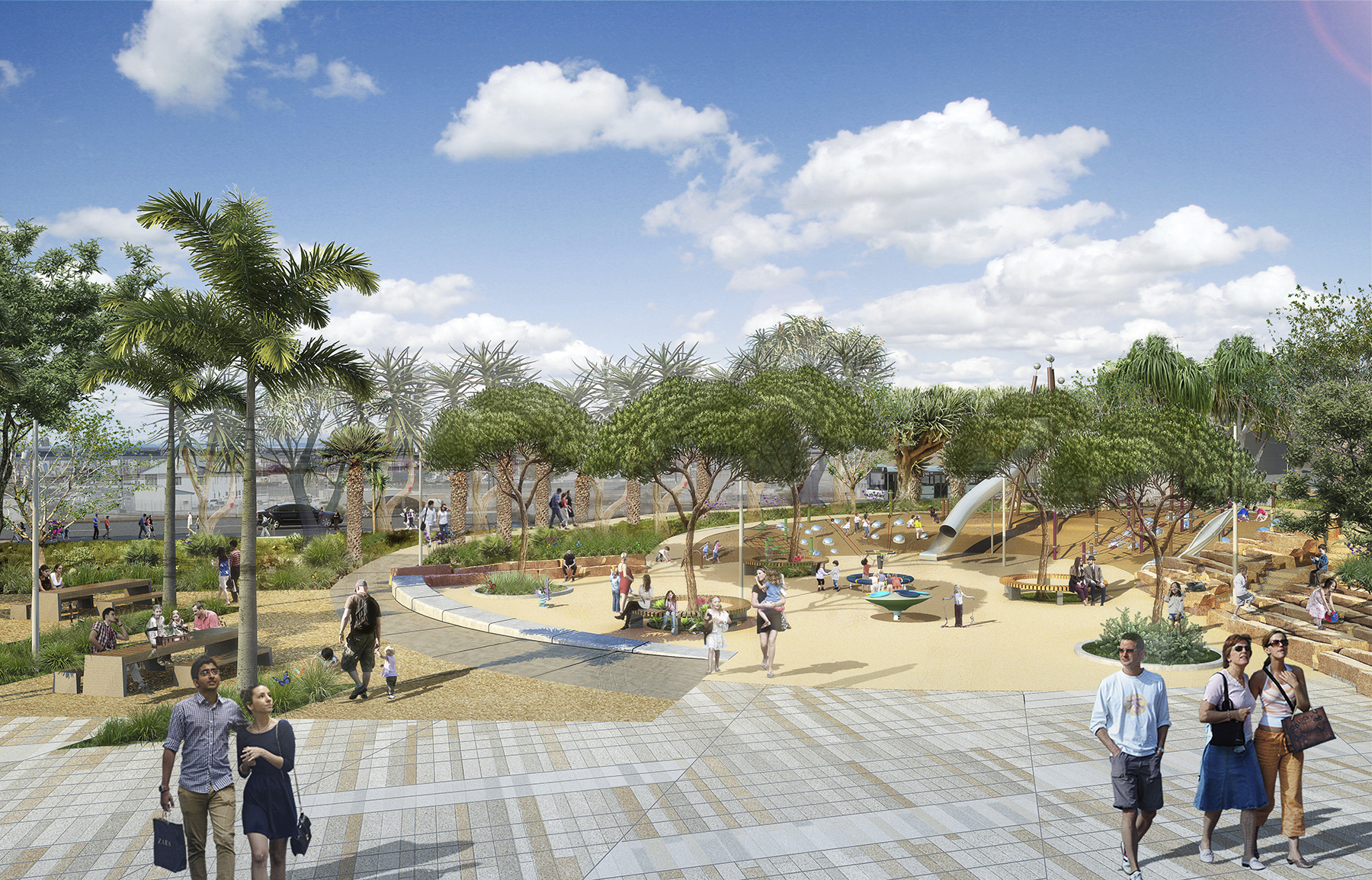
Constructed from about 40,000 cu yd of fill material, the mound — called the Upland — will be approximately 20 ft tall at its highest point and cover roughly half the footprint of the overall project site, says Chrisco. In addition to the bridge’s landing site, the mound will also feature a children’s play area, an amphitheater space to be known as the Bluff, restroom facilities, and a site for a possible future restaurant.
Along the waterfront promenade itself, the project will reconstruct approximately 400 ft of the existing sea wall using a combination of sheet piles and king piles, Chrisco says. A roughly 280 ft long section of that new sea wall will also feature a series of architectural stone steps that descend to the water. This will be an aesthetic rather than functional feature, as planters and other barriers will prevent the public from using the steps to go down to the water. Instead, the steps — made from Mexican onyx — will serve as a “visual connection,” Chrisco explains, to demonstrate “the fluctuation of water elevations against the stones that you wouldn’t get if there was just a traditional sheet pile wall there.”
‘Picnic pier’
Visitors will be able to access a new 5,000 sq ft pier that will extend from the sea wall. L-shaped in plan, the pier will provide the public with views out toward the harbor as well as back toward the stone steps, Chrisco says. It will feature a concrete substructure with wooden decking and will be supported on prestressed concrete piles.
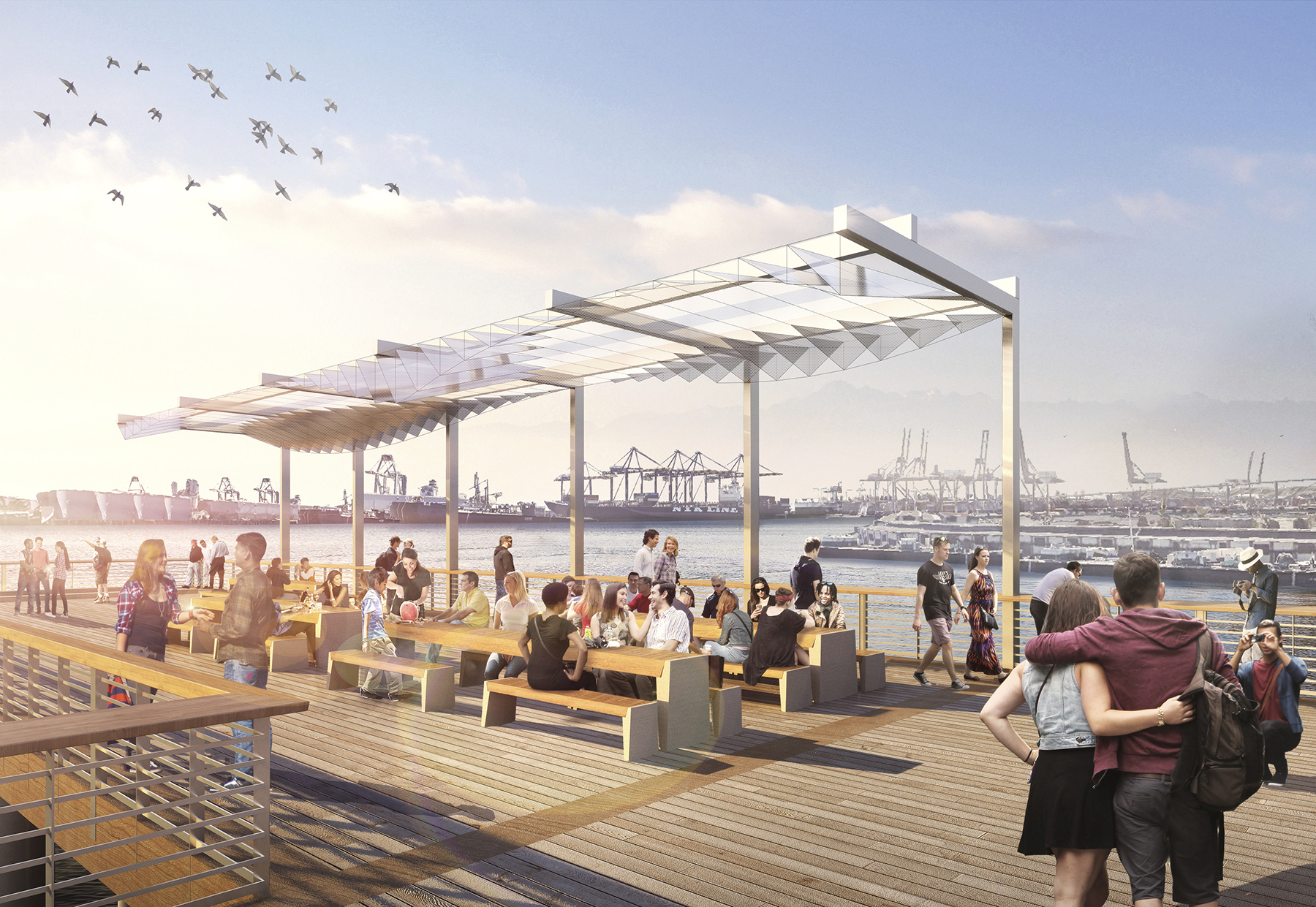
Dubbed the “picnic pier,” the structure will host large picnic tables and benches and a shade structure. There will also be a cutout portion in the wooden deck that will support a large hammocklike mesh made from playground-grade steel wire and nylon, connected by a cabling system to the pier structure, Chrisco explains. Located toward the end of the pier, the hammock will enable visitors to be “perched above the water and able to look straight down into the water in a really unique way,” Chrisco notes.
Bridging the sites
The pedestrian bridge will feature a longitudinal arch extending along the center of the deck so that people can cross on either side. Planters will act as a central median on the bridge to create an aesthetic link to the Avalon promenade and park features, says St éphane Dulor, P.E., a bridge services manager at TYLI. The arch and the deck will be made from reinforced concrete, with steel hangers connecting the two elements.
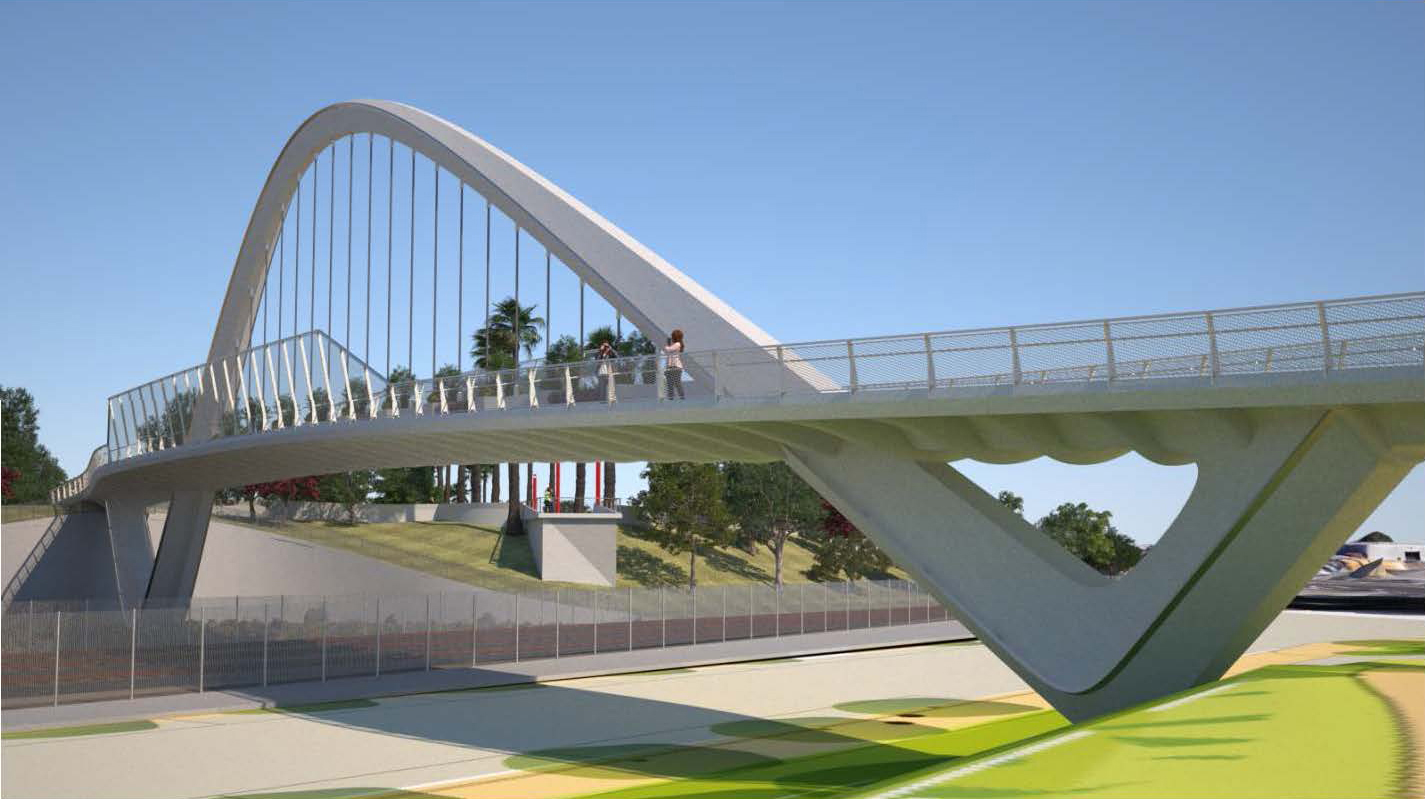
In plan, the bridge deck will measure slightly more than 29 ft wide to accommodate maintenance and port security vehicles that will need to cross, Dulor says. The deck will provide a clearance of approximately 24 ft above the railroad tracks; the railroad also requires a 10 ft tall barrier where the bridge crosses the tracks, which will be accomplished by increasing the height of the pedestrian railing in the middle of the span, Dulor adds.
Concrete wing walls will be located at the abutments on each end of the structure. The abutments will be founded on pile caps and precast, prestressed octagonal piles, driven to depths of as much as 50 ft, Dulor says.
TYLI has been working with the Wilmington neighborhood community on the design of the bridge and the surrounding park, Dulor says. Public comments at outreach meetings contributed to the selection of the bridge’s arched form and stressed the need for adequate parking at the site, he explains. A gateway structure or feature is also planned at the entry to the new park.



